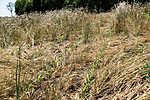Develop Mutually Agreeable Lease Terms to Reap Soil Health, Yield Rewards
Tenants and landlords should work together to resolve the many logistics around cover crops, including the number of acres planted, expenses, profits and other issues.
Read More





